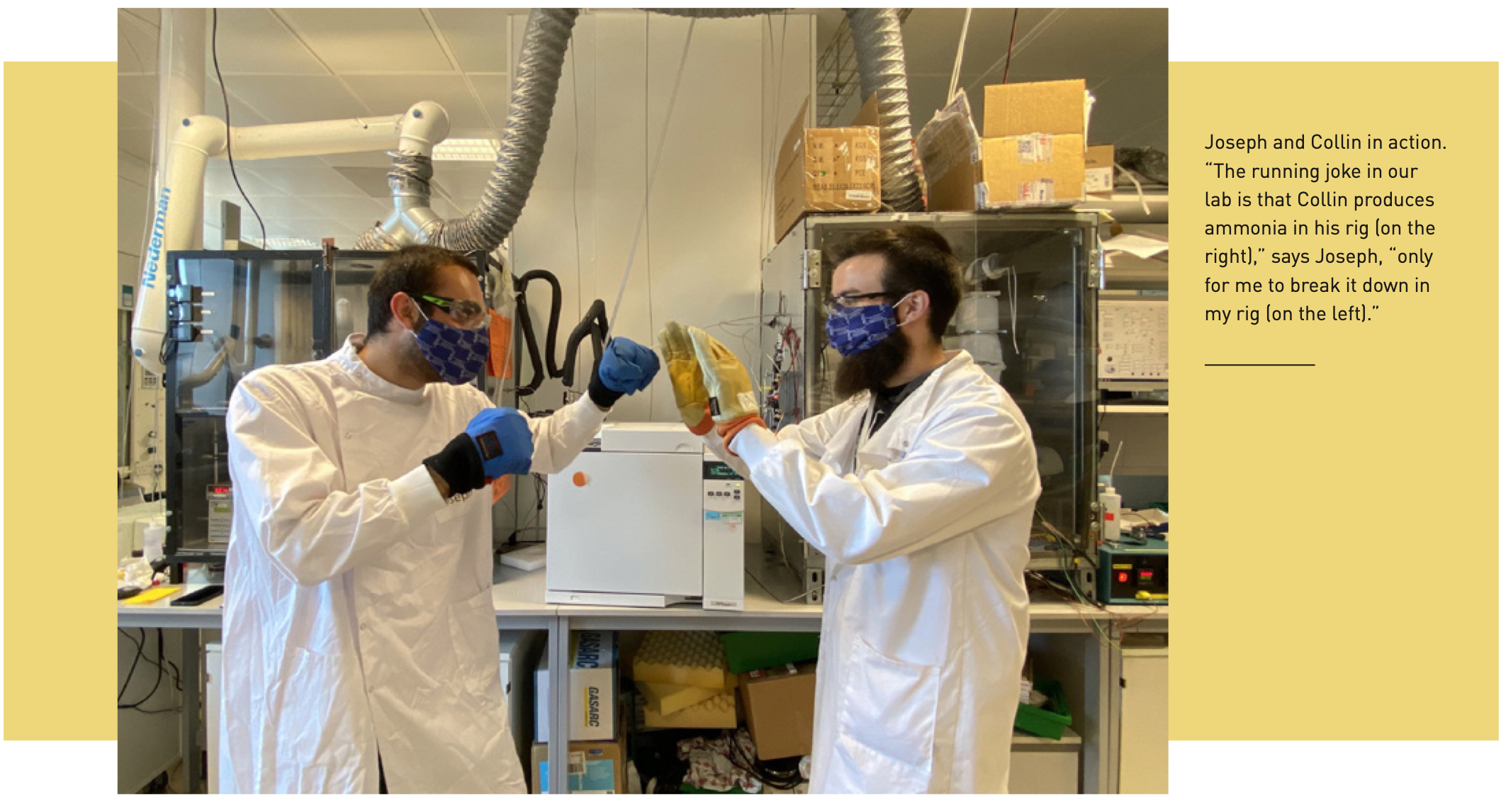Submitted by B. Pinho on Wed, 28/10/2020 - 10:02
PhD student Joseph El Kadi and Collin Smith were mentioned in the CEB focus newsletter (CEB Focus 31, October 2020)
"Transitioning our energy economy away from fossil fuel dependence towards one based on renewable and alternative forms of energy requires novel solutions for energy storage, in which the role of hydrogen has promising potential. However, a significant obstacle to the wider implementation of hydrogen in energy trade is its costly and energy-intensive storage, coupled with safety concerns associated with its high flammability.
The potential energy applications of hydrogen and ammonia can be broken down into the following timescales and sizes: short-term energy storage; long-term energy storage; long distance transport/trade of energy; and fuelling the transport sector. While each category is likely to involve a combined solution, there are aspects where hydrogen or ammonia are inherently more suitable.
To match daily or hourly fluctuations in both supply and demand, hydrogen is a more promising option because the cycle of storing and harnessing energy in ammonia is unable to cope with rapid changes. In comparison, ammonia has a significant role to play in long-term energy storage due to its most advantageous feature – high volumetric energy density.
The powering of automobiles, trucks and buses constitutes a major segment of energy consumption that needs to be displaced by renewable energy. Due to space, weight and cost constraints involved
in transport, the high volumetric energy density of liquid ammonia makes it particularly attractive. However, the technological issues associated with harnessing ammonia’s energy currently impede its use to fuel transportation. Therefore, hydrogen is currently a more feasible route to fuelling the transport sector, particularly with regards to large commercial vehicles where space and cost are less of a constraint, while small consumer vehicles may be more easily powered, at least for the time being, with batteries. " Source: Download CEB Focus 31, October 2020
Read more:
Joseph El Kadi, Collin Smith and Dr Laura Torrente-Murciano, N, “H2 and NH3
– the Perfect Marriage in a Carbon-free Society,” The Chemical Engineer, 2020, www.thechemicalengineer.com/features/h2-and-nh3-the-perfect-marriage-in-a- carbon-free-society/
Bimbo, N, “The Unbearable Lightness of Hydrogen,” The Chemical Engineer, 2019, https://bit.ly/3czr5V0



